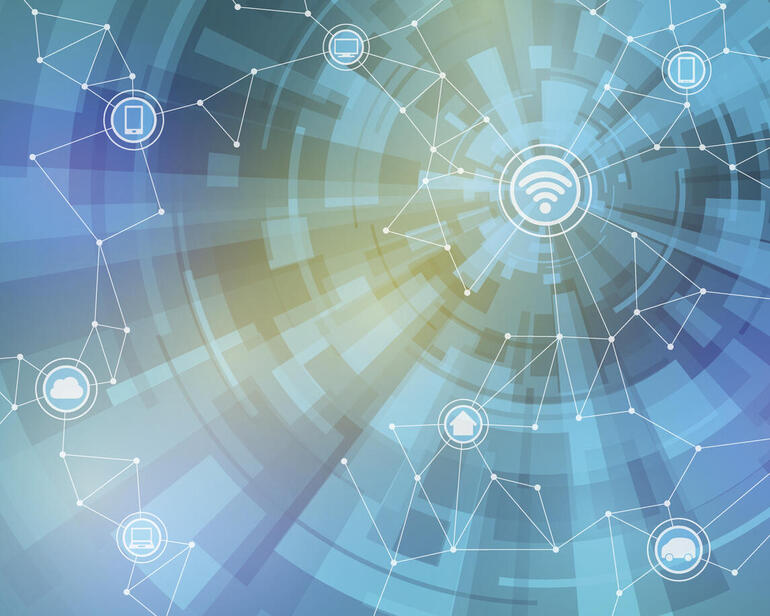Open source projects are driving innovation at the edge by accelerating the deployment of cloud-native, containerized and distributed apps, LF Edge report also finds.

Image: iStock/chombosan
By 2028, cumulative capital expenditures of up to $800 billion will be spent on new and replacement IT server equipment and edge computing facilities. These expenditures will be relatively evenly split between equipment for the device and infrastructure edges, according to LF Edge’s fourth annual State of the Edge 2021 Report.
SEE: TechRepublic Premium editorial calendar: IT policies, checklists, toolkits, and research for download (TechRepublic Premium)
The market and ecosystem report for edge computing shares insight and predictions on how the COVID-19 pandemic disrupted the status quo, how new types of critical infrastructure have emerged to service the next-level requirements and how open source collaboration can efficiently scale edge infrastructure.
“Our 2021 analysis shows demand for edge infrastructure accelerating in a post COVID-19 world,” said Matt Trifiro, co-chair of State of the Edge and CMO of edge infrastructure company Vapor IO, in a statement. “We’ve been observing this trend unfold in real time as companies re-prioritize their digital transformation efforts to account for a more distributed workforce and a heightened need for automation.”
The new digital norms created in response to the pandemic will be permanent, Trifiro added. “This will intensify the deployment of new technologies like wireless 5G and autonomous vehicles but will also impact nearly every sector of the economy, from industrial manufacturing to healthcare.”
The pandemic is accelerating digital transformation and service adoption
Government lockdowns, social distancing and fragile supply chains had consumers and enterprises using digital solutions last year that will permanently change the use cases across the spectrum, LF Edge said. Expertise in legacy data centers could be obsolete in the next few years as the pandemic has forced the development of tools for remote monitoring, provisioning, repair and management, which will reduce the cost of edge computing, the organization said.
SEE: Infrastructure modernization remains the biggest use case for enterprise open source (TechRepublic)
Some of the areas experiencing growth in the global infrastructure edge power are automotive, smart grid and enterprise technology. As businesses began spending more on edge computing, the report cited, specific use cases that have increased, including:
- Manufacturing increased from 3.9% to 6.2%, as companies bolstered their supply chain and inventory management capabilities and capitalized on automation technologies and autonomous systems.
- Healthcare, which increased from 6.8% to 8.6%, was buoyed by increased expectations for remote healthcare, digital data management and assisted living.
- Smart cities increased from 5% to 6.1% in anticipation of increased expenditures in digital infrastructure in areas such as surveillance, public safety, city services and autonomous systems.
“In our individual lock-down environments, each of us is an edge node of the internet, and all our computing is, mostly, edge computing,” said Wenjing Chu, senior director of open source and research at Futurewei Technologies, and LF Edge governing board member, in a statement. “The edge is the center of everything.”
Open source is driving innovation at the edge
LF Edge, which hosts nine projects including State of the Edge, drives standards for the telecommunications, cloud and Internet of Things edge, the organization said. Each project is a collaborative effort to create an open infrastructure that creates an ecosystem of support. The projects support emerging edge applications across areas such as non-traditional video and connected things that require lower latency and faster processing and mobility, the organization said.
SEE: 5 Internet of Things (IoT) innovations (free Pdf) (TechRepublic)
“State of the Edge is shaping the future of all facets of just edge computing and the ecosystem that surrounds it,” said Arpit Joshipura, general manager of networking, IoT and edge, in a statement. “The insights in the report reflect the entire LF Edge community and our mission to unify edge computing and support a more robust solution at the IoT, enterprise, cloud and telco edge.”
Other highlights from the State of the Edge 2021 report include:
- Off-the-shelf services and applications are emerging that accelerate and de-risk the rapid deployment of edge in these segments. The variety of emerging use cases is in turn driving a diversity in edge-focused processor platforms, which now include Arm-based solutions, SmartNICs with FPGA-based workload acceleration and GPUs.
- Edge facilities will also create new types of interconnection. Similar to how data centers became meeting points for networks, the micro data centers at wireless towers and cable headends that will power edge computing often sit at the crossroads of terrestrial connectivity paths. These locations will become centers of gravity for local interconnection and edge exchange, creating new and newly efficient paths for data.
- 5G, next-generation SD-WAN and SASE have been standardized. They are well suited to address the multitude of edge computing use cases that are being adopted and are contemplated for the future. As digital services proliferate and drive demand for edge computing, the diversity of network performance requirements will continue to increase.
Also see
Source of Article



